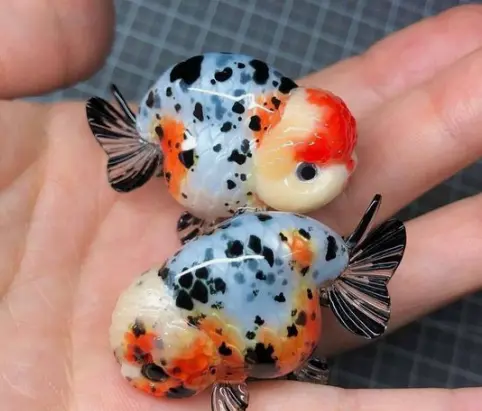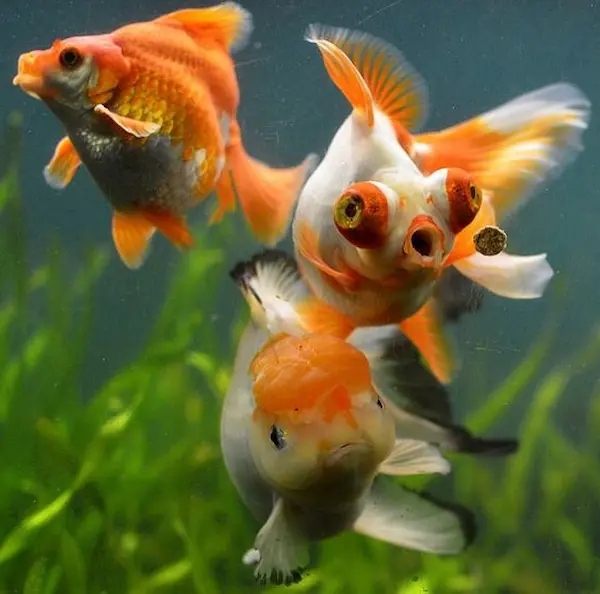Curious about the cute puffy cheeks on some goldfish? These endearing features hold valuable insights into the world of aquatic life. In this article, we’ll take a deep dive into the realm of goldfish with puffy cheeks, exploring their origins, care requirements, and the fascinating science behind their unique appearance.
The Origins of Puffy Cheeks
Goldfish with puffy cheeks, also known as “wen,” possess their unique feature due to selective breeding. Dedicated fish enthusiasts have deliberately bred goldfish over centuries to emphasize specific characteristics, resulting in a diverse range of shapes, sizes, and colors.
Breeding Selection
Breeders intentionally bred goldfish with a genetic inclination for puffy cheeks in order to develop this specific trait. Through meticulous mating and multiple generations of breeding, they successfully cultivated the delightful puffy-cheeked goldfish that we now recognize today.
Wen Growth
Goldfish have distinct fleshy growths on their heads called puffy cheeks, or wen. These growths come in different sizes and shapes, giving each fish its own unique appearance. The wen grows gradually and becomes more prominent as the goldfish matures.
Care Requirements for Puffy-Cheeked Goldfish

Taking care of a goldfish with puffy cheeks requires specific responsibilities to ensure their well-being and contentment. Follow these guidelines:
Filtration and Water Quality
Maintaining water quality is crucial for keeping your Bubble Eye Goldfish healthy. Investing in a high-quality filter will help keep the water clean and properly oxygenated. Additionally, regular water changes are essential as these types of goldfish are sensitive to changes in their environment.
Diet and Nutrition
It is important to feed these goldfish a balanced diet to meet their hearty appetite. Providing high-quality fish pellets and flakes, along with occasional treats like freeze-dried brine shrimp or bloodworms, will help maintain their health
Temperature and pH
It is important to maintain the proper water temperature and pH level for puffy-cheeked goldfish. These fish prefer water temperatures between 65°F to 72°F (18°C to 22°C) and a pH range of 6.5 to 7.5.
Tankmates
Think about the compatible nature of your tankmates. Avoid fish that could upset your puffy-cheeked goldfish or nip at the wen. It performs best with relaxed, comparable-sized companions.
Decoration and Assistance
Choose a soft base, such as sand, to protect the tiny bubbles. To reduce the possibility of harm, decorate the aquarium with rounded, smooth ornaments. Avoid using anything that could pierce the bubbles, such sharp or abrasive things.
The Mechanism of Puffy Cheeks
Let’s now investigate the fascinating science underlying goldfish’s swollen cheeks.
Development of Wen
The wen is a connective tissue structure that is covered with minute scales on the heads of goldfish. Males experience the most noticeable growth, which frequently lasts the entirety of their lives. It has both decorative and defensive functions.
Color Differences
Due to the same selective breeding that produced its unique characteristic, puffy-cheeked goldfish appear in a variety of colors and patterns. These fascinating differences result from various DNA pairings.
Health of Bubble Eye Goldfish

The Bubble Eye Goldfish’s wellbeing should always come first. Watch out for common problems:
A Bubble Burst
Bubbles can rupture due to rough handling or sharp objects in the tank. If a bubble ruptures, keep the water clean to prevent infection, and consult a vet for further advice.
Conclusion
The benefits of selective breeding and the extensive variety within the goldfish species can be seen by goldfish with puffed-out cheeks. These unique aquatic pets require special attention and commitment to their safety. Having one of these wonderful aquatic buddies just makes it more interesting to know the history and science behind their swollen cheeks.
FAQ’s
Q1.Are Bubble Eye Goldfish suitable for beginners?
Bubble Eye Goldfish are not recommended for beginners due to their delicate bubbles, which can be prone to injury. They require special care and consideration.
Q2.What size aquarium is best for Bubble Eye Goldfish?
For sufficient swimming room, Bubble Eye Goldfish need a tank with at least 20 gallons of water. Even better would be a bigger tank that ensures their welfare.
Q3. What ornaments should I use in the Goldfish with Bubble Eyes tank?
To protect the bubbles, decorate the aquarium with rounded, soft ornaments. Steer clear of anything pointy or rough. Sand or equivalent smooth substrate is a good choice.
Q4. How much food should I give my Bubble Eye Goldfish?
As their primary food source, provide them a balanced diet composed primarily of premium goldfish pellets. To add diversity to their diet, sprinkle it occasionally with delicacies like brine shrimp, daphnia, and bloodworms.
Q5. What are some Bubble Eye Goldfish health issues that are common?
Bubble rupture, swim bladder troubles, and vulnerability to water quality issues are common health worries. Numerous of these problems can be avoided with regular surveillance and adequate care.
Read More: “While ‘Goldfish With Puffy Cheeks’ is well-known for its captivating allure, we must not overlook the enigmatic behaviors of aquatic pets, as depicted in ‘My Turtle Keeps Swimming Against the Glass.’ Come with us as we explore the depths of both realms.”

